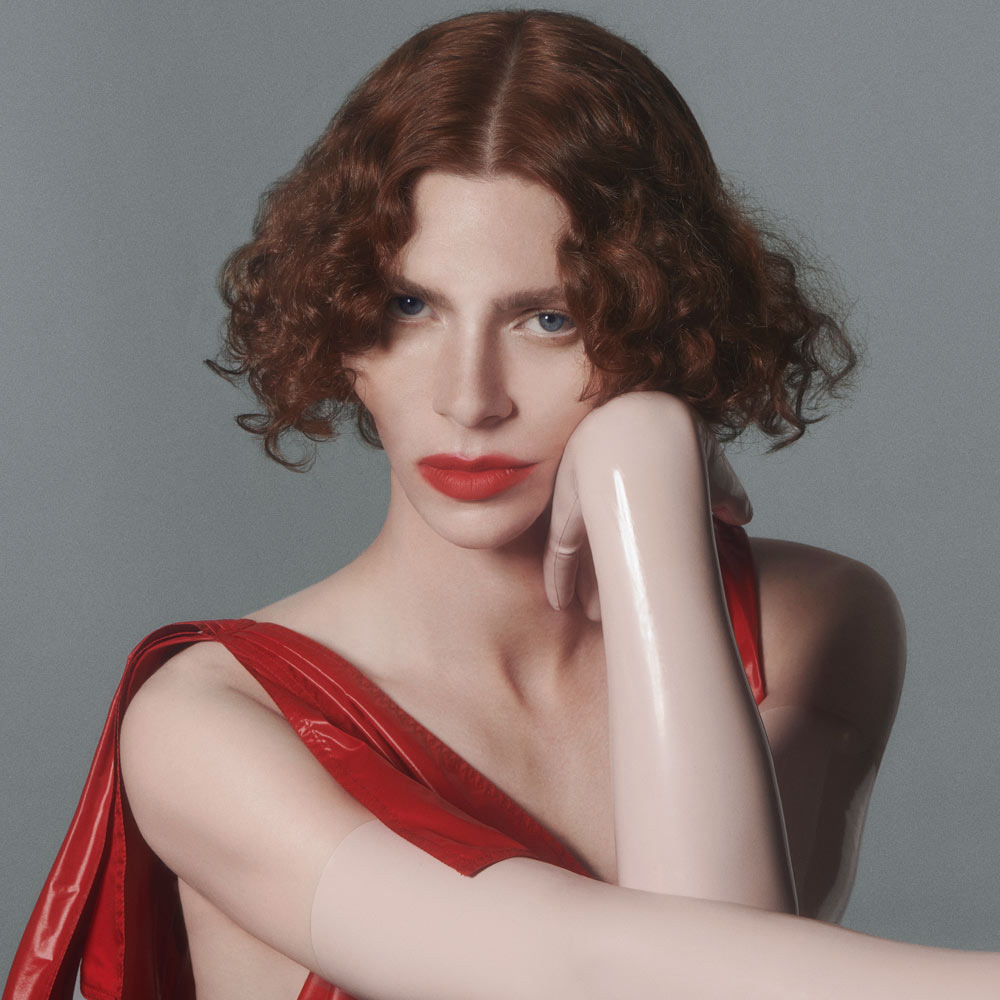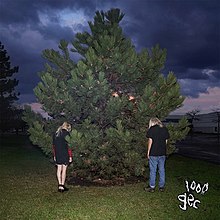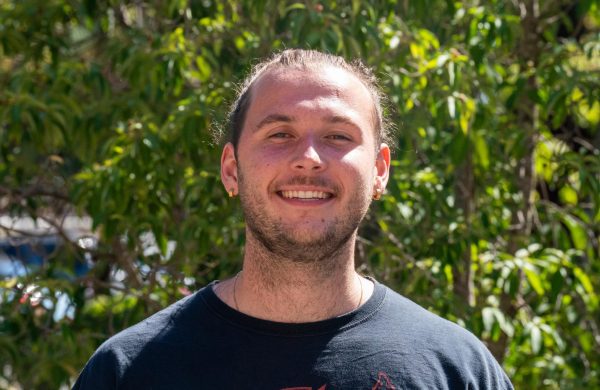Each year music takes strides into uncharted territory, finding ways to expand genres and create new styles and sounds. As an art form, music is forever changing and every new sub-genre or movement has a jumping-off point, a point of inspiration and influence. In today’s music scene, it is becoming more and more difficult to figure out who was the inspiration behind what and who is influenced by whom.
It’s important to recognize the artists and the specific albums that provided the spark for modern musical innovation, especially when those albums are lesser known. Often the inspiration is never quite as big as the mainstream projects built off its back. These three albums and the artists behind them are three of the most influential of our current generation as well as being the gold standard of the sub-genre they claimed as their own.
“Product,” Sophie (2015)
Bursting onto the underground electronic scene in the early 2010s, Scottish-born producer Sophie started making connections and laying the groundwork for the world of music and creativity called hyperpop that she had no idea she’d be creating.
Sophie’s unique sounds put her on the map almost immediately. She was crafting effects and noises that people just hadn’t made with production software and equipment before. The bubbly and sugary textures, coupled with abrasive metallic sounds in dance-style song structure, made for a unique type of electronic music that drew in ears.
In her debut, “Product,” Sophie put all her talents on display. She included her best dance singles, which ended up getting some mainstream recognition and appeal. Her song “Lemonade,” for example, found its way into a McDonald’s commercial. The project also featured some of her most experimental songs, such as “Elle” and “Hard.” Each song is more addictive and energizing than the last. The project was short, sweet and to the point; Sophie showed what she could do with a laptop and production software, and the world took notice.
Shortly after releasing “Product,” Sophie lined up a collaboration with Charli XCX, one of the biggest up-and-coming names in pop music at the time. She ended up producing an entire EP for Charli as well as one of her biggest singles ever, “Vroom Vroom.”
Sophie’s trademark sounds and style became the hottest commodity in electronic pop music. There was even a rumored Lady Gaga collaboration album that Sophie herself teased on Twitter. She also worked closely with PC Music, founded by A. G. Cook, a label largely credited with the creation of hyperpop as a sub-genre, but without Sophie they would never have gotten anywhere. In 2018 Sophie followed up her eight-track project “Product” with “Oil of Every Pearl’s Un-Insides,” truly a tour de force in avant-garde pop that sent shock waves through the industry, specifically among Sophie’s peers. What was just a teaser in “Product” could not have prepared fans and critics for the triumph in experimental pop that “Oil of Every Pearl’s Un-Insides” was.
Sophie had broken through and inspired a generation with her 2015 project but this album set her apart from the rest; the creativity and innovation on display is the kind not often seen. The vocals were more clear and real while the sounds and production were taken to a whole new level. It was clear that she set the benchmark for hyperpop artists to strive for decades to come.
Eight years after Sophie got the ball rolling, there is still more and more innovation in hyperpop. Artists like Umru, Arca and an artist also featured on this list, 100 Gecs, are all pushing the boundaries of pop music and artistic expression. Sophie’s technique and sounds can be found all over hyperpop and electronic songs.
More popular artists, like Flume and Skrillex, have also used sounds Sophie created, opening up a new frontier for electronic music to explore. She was both the gatekeeper for the upper echelon of hyperpop as well as the guide trying to bring as many artists as possible along with her.
The truly special part about the space in music Sophie created is the fact that it is almost entirely made up of queer artists making specifically queer music. The LGBTQIA+ community hasn’t had such a large and popular space in the music industry before, and has not let that opportunity go to waste.
Sophie, a transgender woman, paved the way for so many young queer artists to create art and garner success and attention while doing so. During her Grammy-award acceptance speech, Kim Petras credited Sophie with inspiring her and making her career possible. Underground names that have mentioned Sophie as an inspiration include Backxwash, Let’s Eat Grandma, 100 Gecs, Umru, Danny L Harle and more.
In 2021, Sophie died at the age of 34, but it’s clear her legacy lives on in hyperpop, and her memory will be cherished by queer artists for decades to come.
“1000 Gecs,” 100 Gecs (2019)
Using some of the sounds and styles that Sophie created, producers Dylan Brady and Laura Les brought back some pop-punk tropes from the early 2000s and combined it with hyperpop style production and overly distorted emo vocals. The result received critical acclaim and mainstream recognition. Journalist and pop-music critic Jon Caramanica of The New York Times chose “1000 Gecs” as his No. 1 album of the year in 2019.
At times the album can barely be described as music, with the death metal and noise-filled outro on “800db Cloud” and the nonsensical randomness of “I Need Help Immediately,” but somehow it works and always has you coming back for more. “Stupid Horse” is a thrilling ska song with 100 Gecs’ patented high-pitched vocals that can only make you smile and laugh. The angsty and often emo lyrics help them connect to their overwhelmingly young queer audience while also lending themselves nicely to the infectious and enticing production on their songs. Laura Les, a transgender woman, does the vocals for the group and specifically cited voice dysphoria as one of the reasons for their trademark high-pitched vocals.
Dylan Brady found his own production style and a signature sound, his bass drum. Following the release of “1000 Gecs,” Brady became quite popular with artists in need of production help. He began collaborating with big artists such as Skrillex, Charli XCX, Injury Reserve, Kim Petras, Kenny Beats and Rico Nasty, who all enlisted his services. 100 Gecs was able to find a pop music niche never before explored on this scale. A widespread appetite for this music was born with this very album.
Lady Gaga took a stab at the sillier side of pop music with “Artpop” back in 2013 but never leaned into it quite like today’s artists. To her credit, she released a remix album of her most recent release, “Chromatica,” which featured a who’s who of the biggest names in hyperpop remixing and reworking some of the biggest hits on Gaga’s 2020 album.
“1000 Gecs” set the tone for a new wave of absurdist hyperpop in 2019. Artists like Dorian Electra, Alice Longyu Gao, CAKE POP, Aaron Cartier, Fraxiom, Brooke Candy and Gupi all released music either directly collaborating with Dylan Brady or greatly influenced by what 100 Gecs was doing around 2019–2020. This style of pop had finally been built up from the underground scene and gained enough notoriety and traction to inspire so many more artists to also create this style.
Of course, many artists were making similar music before “1000 Gecs,” but none were able to get the attention of the wider music community. The success of 100 Gecs put a lot of these older projects on the map.
Dorian Electra and other similar artists that were around before 100 Gecs benefited greatly from the attention on the sub-genre. Dorian’s 2020 albums “Flamboyant” and “My Agenda” took what
100 Gecs was doing and put even more of a queer twist on it to great success. Even Rebecca Black started her own solo music career on the 100 Gecs side of the hyperpop world in the last year. She did a remix of her infamous “Friday” song featuring hyperpop collaborators Dorian Electra and Big Freedia,
as well as electronic duo 3OH!3.
Building on what Sophie started in experimental pop music, 100 Gecs carved out roads for artists to go down with “1000 Gecs.
Many artists can use hyperpop as a jumping-off point, using this “island of misfit” trend to create their own unique combination of genres and sounds.
“Jeffery” Young Thug (2016)
Possibly the best project from the past decade’s most influential rapper, “Jeffery” is the bar that every rapper is trying to reach. The freshness of the production and the quality-over-quantity approach on this project is what makes it so special in a world where song streams are key and just about every rapper in the space elects to go with 20-plus songs on albums, oversaturating what they do and making it stale in the name of earning money.
While Young Thug has run up a track list on an album or two during his career, he kept “Jeffery” to a tight nine songs, naming every song except one after an idol of his. The respect he has for his idols is evident on each track.
The singing Young Thug does over this mixtape is some of his best ever. His flow on “Wyclef Jean” is so clearly a blueprint for popular rap today, even seven years after its release. This project is ahead of its time, and it’s a no-brainer why so many artists today have taken influence from it.
Artists including Gunna, Lil Baby, Juice Wrld, Playboi Carti and Yeat, among others, have all publicly acknowledged Young Thug as their primary influence and inspiration. Each of those artists has directly copied or built on Young Thug’s style of vocal delivery, and they haven’t been exactly shy about wearing their influences on their sleeves.
“Jeffery” was the clearest and highest-quality example of Young Thug’s abilities front to back, but it’s more his ability to effortlessly make No. 1 hits that so many of these young, up-and-coming rappers are trying to replicate.
The bonus track, “Pick Up the Phone,” was a bonafide No. 1 hit that could have gone No. 1 regardless of the year it was released. Almost every big hip-hop hit since has tried to replicate the bounciness and stickiness of its production.
The demand for the style of rap music “Jeffery” sparked was followed by a large supply of that kind of rap into the streaming ether. Those same artists who acknowledged Young Thug’s influence were soon thrust into the mainstream, with some faring better than others.
Lil Uzi Vert has been a megastar since his emergence, while Young Thug’s close friend Gunna has gone up and down in terms of his relevancy and the demand for his music.
Few of these artists have been able to recapture the quality Young Thug found with “Jeffery,” but even fewer have been able to do it as consistently as Young Thug has in subsequent years.
What Young Thug likely didn’t anticipate was being the catalyst for some of the more “out there” rap music that is released nowadays.
It’s difficult to draw direct connections but it would be even more difficult to imagine Young Thug not being a huge influence on what Playboi Carti has done in recent years with the somewhat experimental albums “Die Lit” and “Whole Lotta Red.” While Playboi Carti found his style by expanding on what Young Thug did, Yeat, Gunna and others have just tried to recreate Young Thug’s vocal sound, failing to find their own ground.
Unlike hyperpop, rap is an extremely saturated genre, and it’s almost impossible to find unique and new sounds.
Artists are bound to copy what others have done before them, intentionally or not. However thanks to Young Thug and “Jeffery,” rap music is thriving and expanding every year.
Trends can rise and reach No. 1 on the charts, then go away for decades, but innovation is forever, and those artists on the frontlines of innovation and inspiration deserve credit.
While it’s easier for artists to get lost in the shuffle in a streaming and algorithm-driven music industry, it’s just as easy to find progressive artists making their own style and creating roads for other artists to pave and travel down long after they are gone.






